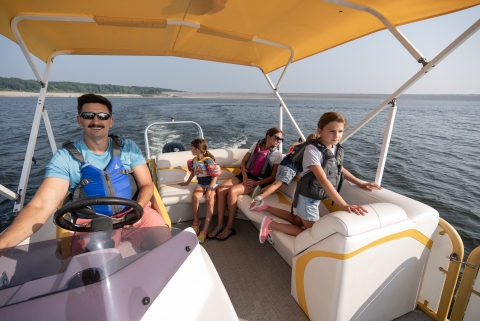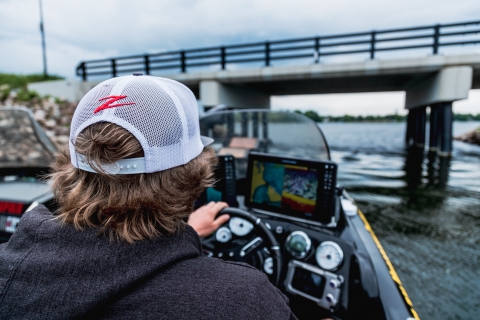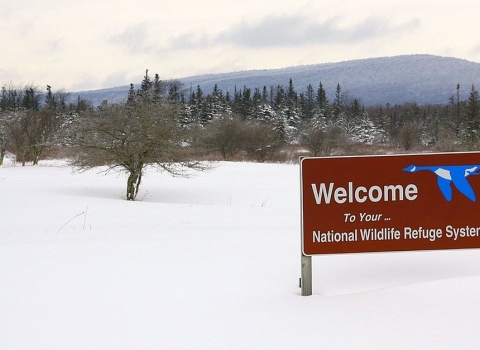Motorized boating is a popular American outdoor pastime, an economic force, and funds conservation efforts across the Nation. To capture metrics on the time spent outdoors along with the economic impacts of recreational boating, the 2022 National Survey of Fishing, Hunting, and Wildlife-Associated Recreation included motorized boating survey questions for the first time in the Survey’s 67-year history. The 2022 Motorized Boating in the United States: A Demographic and Economic Analysis addendum report data shows that 47.3 million Americans over the age of 6 years spent time on a motorboat in 2021. Based on this data, it is estimated that 16 percent of the overall American population explored the outdoors on a motorboat in 2021. The National Survey and this first of its kind addendum report are coordinated by the U.S. Fish and Wildlife Service’s Office of Conservation Investment and serve as valuable resources for the boating and angling industry, state and territory agencies, and other partner organizations working to advance outdoor pursuits and public access to waterways.
“These boating participation estimates are not restricted to just boat owners but rather represent the total number of people who boated recreationally on a motorized vessel in 2021,” said Richard Aiken, Economist for the Office of Conservation Investment. “That includes time spent boating on a friend’s boat or a rented boat and included time spent on boats fishing, hunting, wildlife watching, and those simply enjoying being on the water.” Aiken notes that these estimates do not include non-motorized vessels such as rafts or kayaks. “Working with our survey partner the Association of Fish & Wildlife Agencies, we elected to focus on survey questions about motorized boating,” adds Aiken. “With limited budgets and survey length restrictions, we focused on motorized boaters to better understand this group and their habits.” Survey data on participation rates revealed that most active boaters were White, male, between the ages of 46 and 64 years old, and living in a rural area.
Survey data also showed households with above median household incomes had a high participation rate in boating with 43 percent of boaters having annual household incomes higher than $100,000. However, Aiken points out that boating can be enjoyed at many different price points. “Boats can range in cost from an inexpensive used spartan twelve-foot boat to a $30,000 premier bass boat used by competitive anglers,” added Aiken.
The detailed demographic information contained within the new addendum report highlights not only who participates in motorized boating but can also highlight opportunities to engage and introduce others to boating. Around the country, many state agencies and non-governmental organizations are working to increase access to outdoor pursuits. One organization that is leading the way to increase participation in boating is The Recreational Boating & Fishing Foundation. “In our mission to increase participation in recreational boating and fishing and support the conservation efforts that rely on it, data is critical to inform decision-making,” said RBFF President & CEO Dave Chanda. “As we work to recruit newcomers to the activities through our consumer-facing campaigns and empower the industry in its own R3 outreach, this report will provide valuable insights that can be activated at the local level to effectively connect with and engage participants.” R3 is a nationwide movement to maintain and increase participation in and support for outdoor pursuits such as hunting, angling, and boating. The movement started as a result of a noticeable decline in outdoor pursuit participation like hunting and fishing in the 1980s. RBFF, other non-profit organizations, government agencies, and industry partners make up the R3 community working to get more people outside and participating in outdoor pursuits.
“The newly released addendum report is a valuable resource providing key information on participants’ gender, age, and other demographic information that can help inform current and future opportunities to get more people on the water making memories and enjoying our Nation’s waterways,” said Tom Decker, Communication, Analysis and Partnerships Branch Manager for the Office of Conservation Investment. “Additionally, the addendum shows the economic benefits of motorized boating and helps to highlight the funding role marine manufacturers have in state-level conservation efforts and access.” According to the addendum data, boaters spent $25.7 billion on boats and related items, such as motors, trailers, fuel, launch fees, mooring, and storage, purchased primarily for fishing, hunting, and wildlife watching in 2021.
Along with the jobs and economic opportunities created by boating, the pastime also supports conservation and waterway access through a manufacturer federal excise tax. Since 1984, federal excise taxes on motorboat fuel and import taxes on yachts and pleasure craft has funded millions of dollars in conservation and outdoor access. “Through the federal excise tax, America’s marine manufacturers share an important partnership with state and federal biologists that ensures clean water, healthy fish, and access to waterways,” added Decker. These funds also provide boater safety classes for the public via a U.S. Coast Guard partnerships with state agencies. These courses provide important lessons in safe boating practices helping the public safely enjoy their time on the water. To learn more about the federal excise tax paid by marine manufacturers and to read more about the projects supported by the excise tax visit https://partnerwithapayer.org/marine-manufacturing/.
Boating makes a significant impact in the American economy and positively affects lives and lifestyles. “This first of its kind resource has been a highly sought after resource by our partners and the larger R3 community for some time,” said Aiken. “Whether used by boating agencies, the U.S. Coast Guard, state fish and wildlife agencies, tourism and visitor bureaus, trade and industry associations, or community planners this report adds to the growing resources available to understand and increase recreational boating participation.” To learn more about the source data used to create the addendum, visit https://www.fws.gov/program/national-survey-fishing-hunting-and-wildlife-associated-recreation-fhwar.







